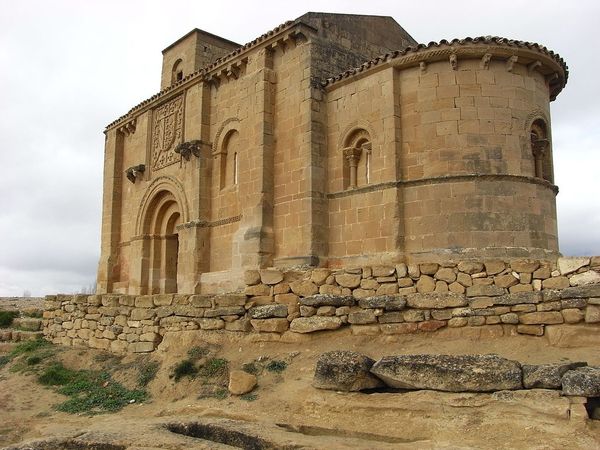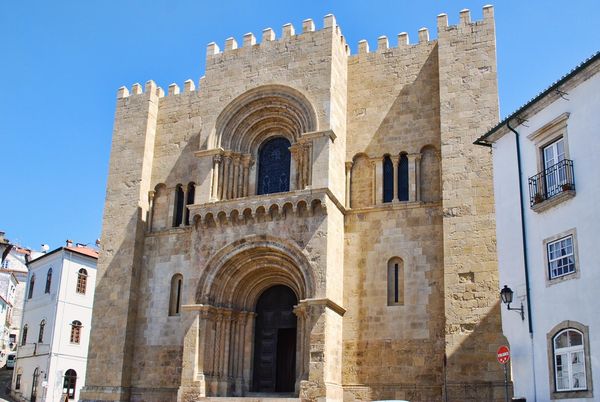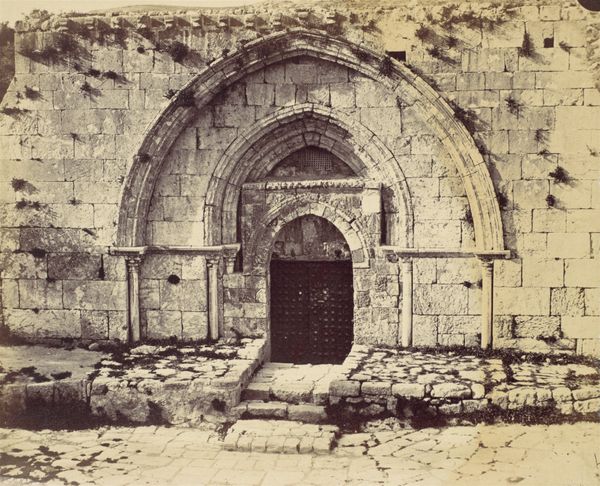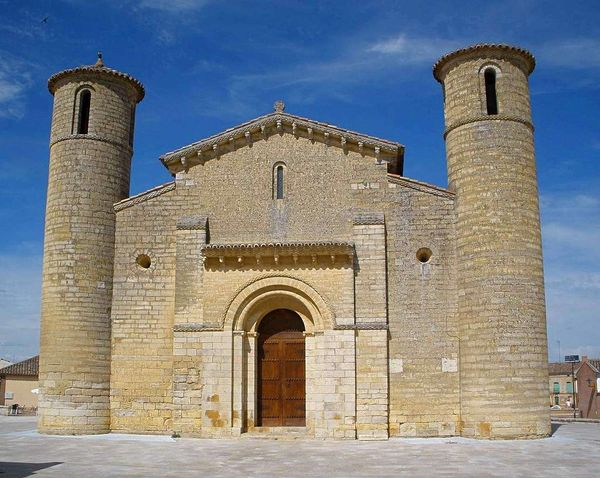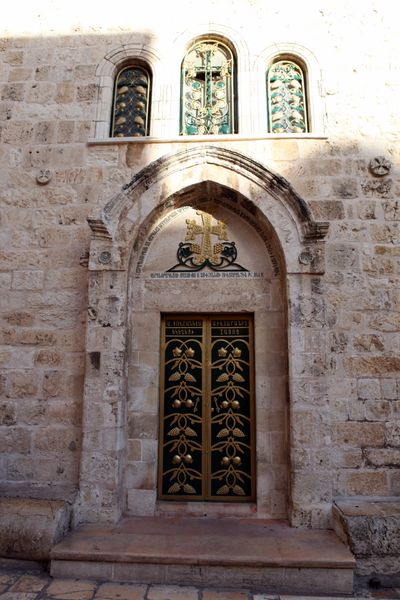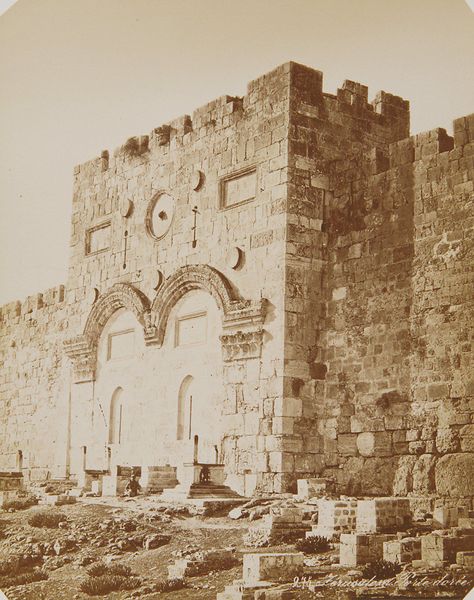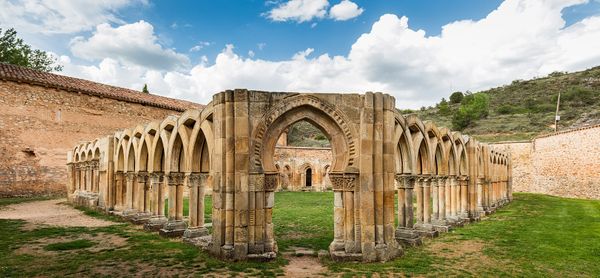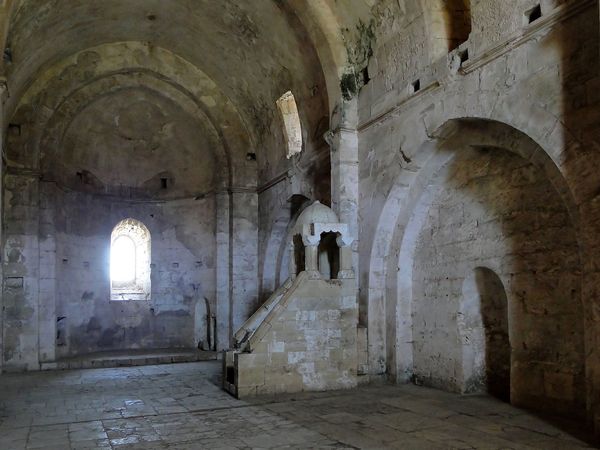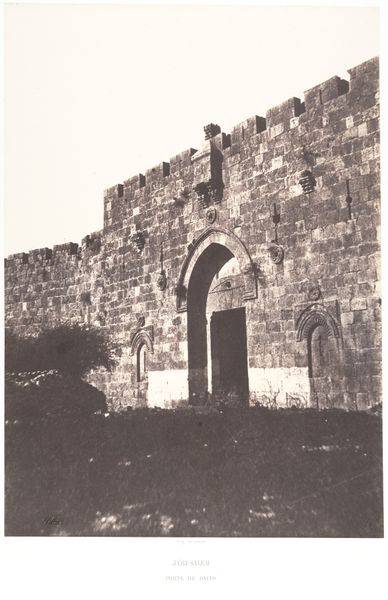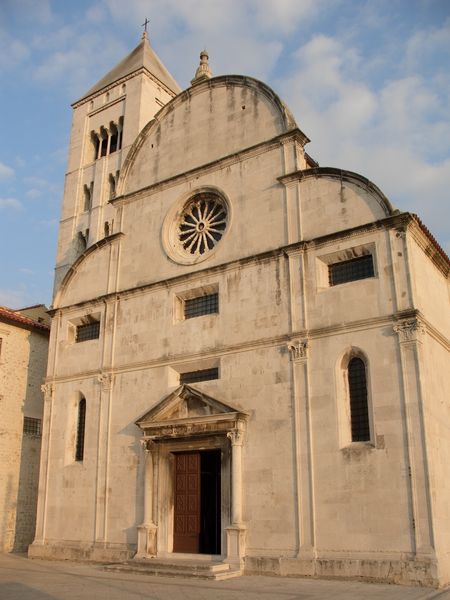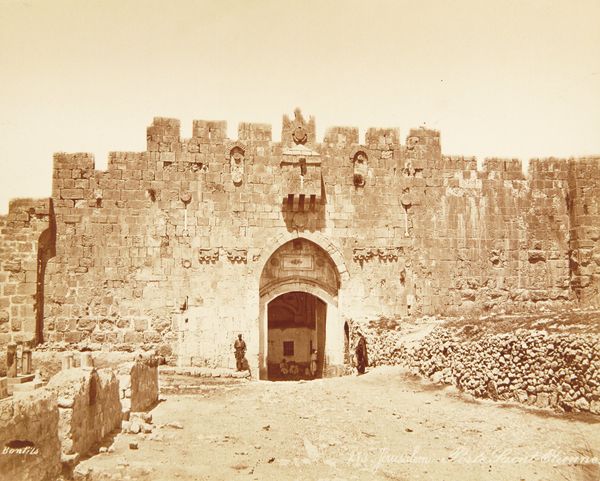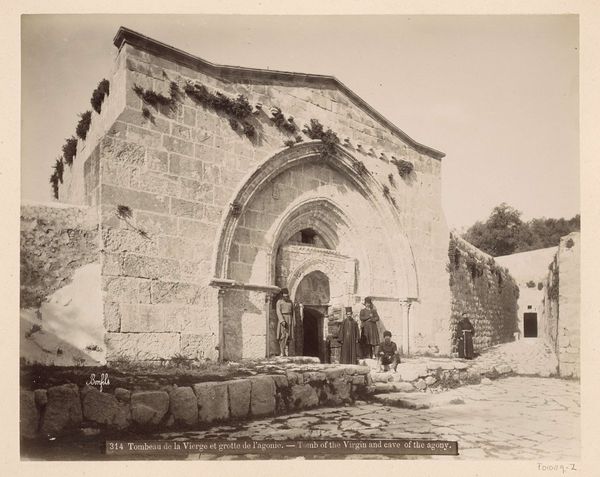
public-art, architecture
#
public art
#
medieval
#
graffiti art
#
street art
#
public-art
#
romanesque
#
arch
#
architecture
Copyright: Public domain
The Cathedral of Our Lady of Tortosa in Syria was built with stone during the Romanesque period, between 1000 and 1250. This imposing structure reflects the influence of the Crusades on the Levant. The architecture blends Western European religious design with the realities of the Middle East. Its thick walls and minimal windows served defensive purposes, while the overall design asserts Christian power in a region of cultural exchange and military conflict. The Cathedral visually communicates the complex social and political dynamics of the Crusader states, reflecting both their ambition and their vulnerability. To fully understand this building, one must investigate the historical context of the Crusades, including the motivations of the Crusaders, the political landscape of the Levant, and the interactions between different religious and cultural groups. Architectural and historical resources can help contextualize its design and placement within this turbulent period. Ultimately, the Cathedral stands as a powerful testament to the meeting of civilizations during a time of war.
Comments
No comments
Be the first to comment and join the conversation on the ultimate creative platform.
